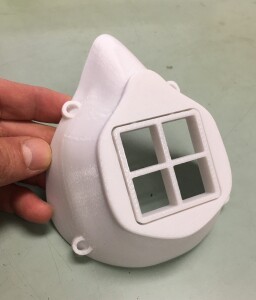31 March, 2020. During the height of the COVID-19 pandemic, Danko Arlington was able to 3-D print several face mask prototypes on its two Stratasys 900MC Fused Deposition Modeling (FDM) printers. The printed design is known as a ‘Montana Mask’ and contains a removable filter frame.
Unfortunately, the masks could only be printed in polycarbonate, ABS, or ULTEM 9085 plastics which are normally used to construct the company’s durable pattern tooling. As a result, the masks were too rigid for a secure, comfortable, and tight face-fit. In addition, the 3-D layers are porous and will certainly let unfiltered air pass thru the plastic. Overall not great. ☹ Only several masks were made before the project was withdrawn due to the equipment’s inability to print a more flexible material.
Throughout the country, other additive manufacturing users, however, were successfully able to 3-D print in softer materials like thermoplastic polyurethane (TPU) which is a type of elastomer which is characterized by its high flexibility and durability – similar to rubber. During the Personal Protective Equipment (PPE) shortage crisis, the additive manufacturing industry was able to demonstrate its unique capability to create essential components in little time, completely from scratch.
Although not suited to print flexible PPE, Danko Arlington’s industrial 3-D platforms which print in hard plastics and sand may certainly serve the need for future crises. Lesson learned – additive manufacturing can immediately step-up to any challenge with little investment or lead time.

 ©2025
©2025